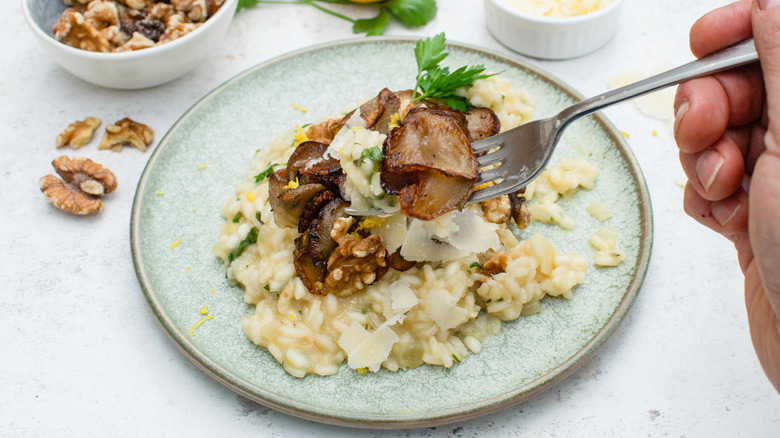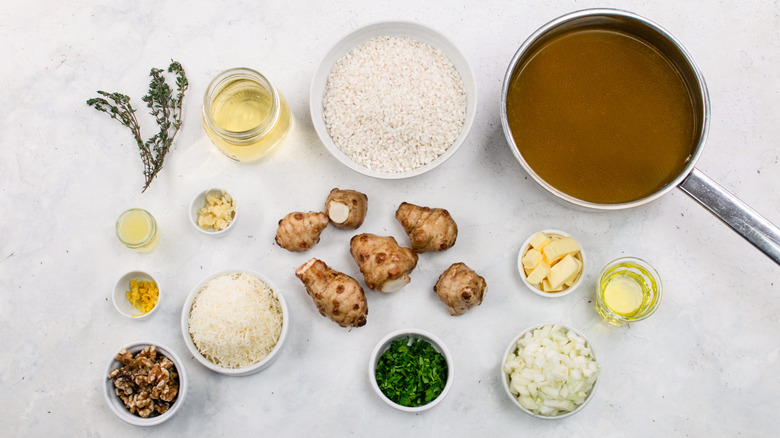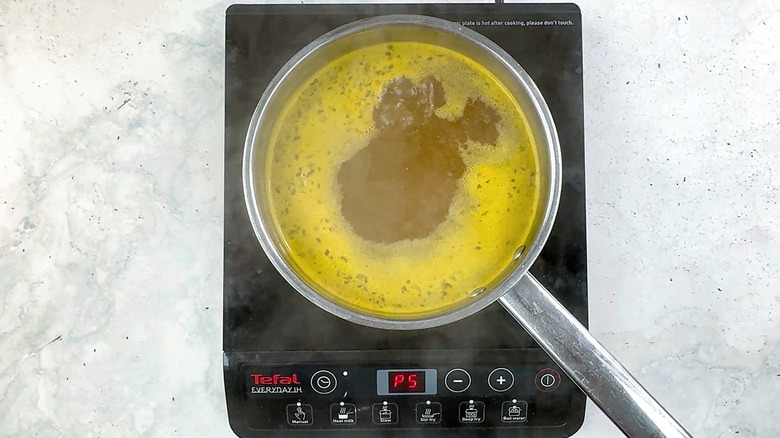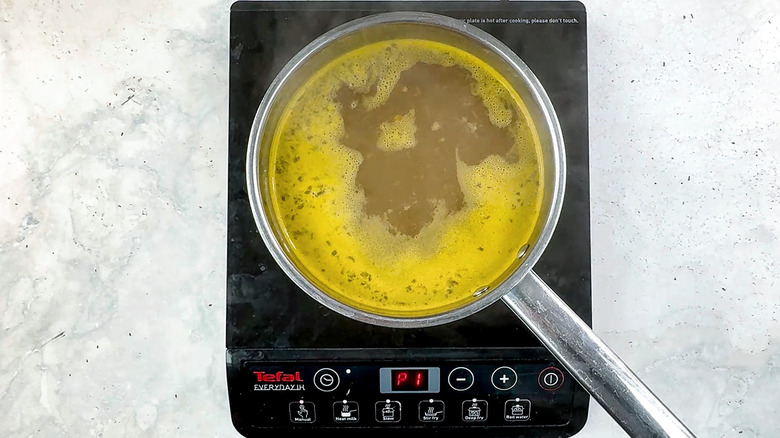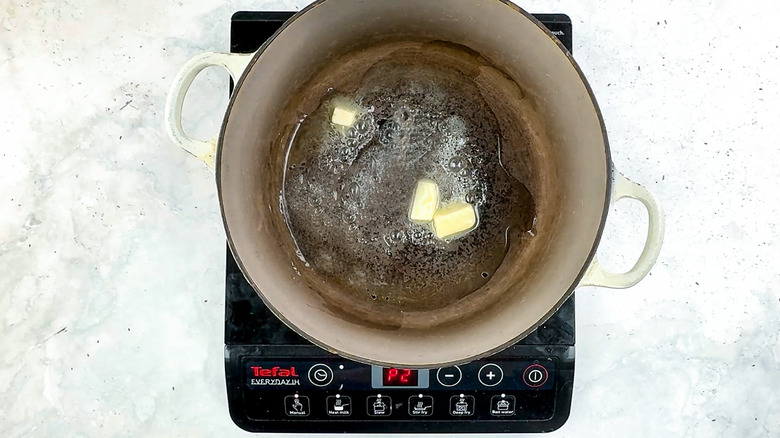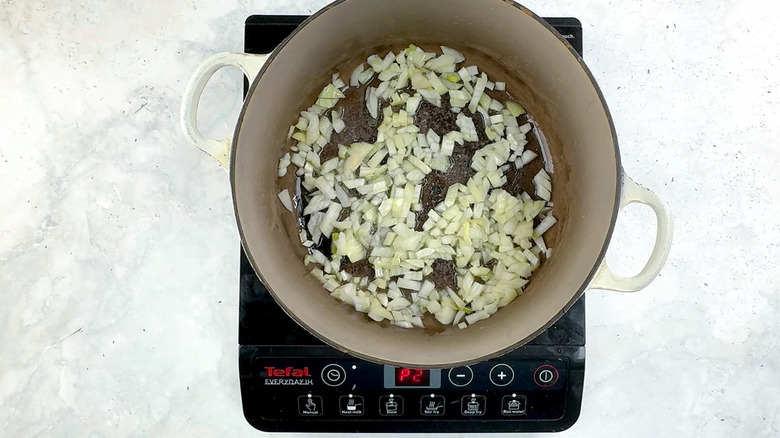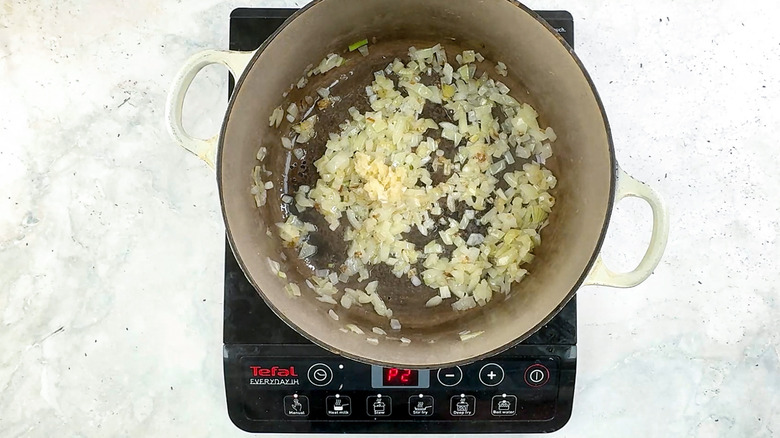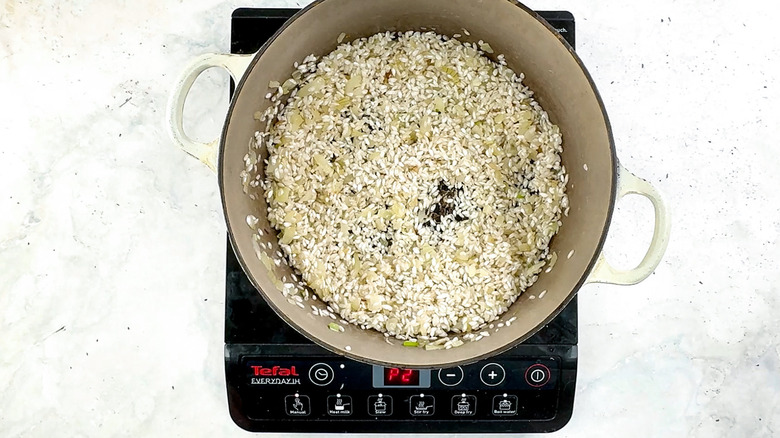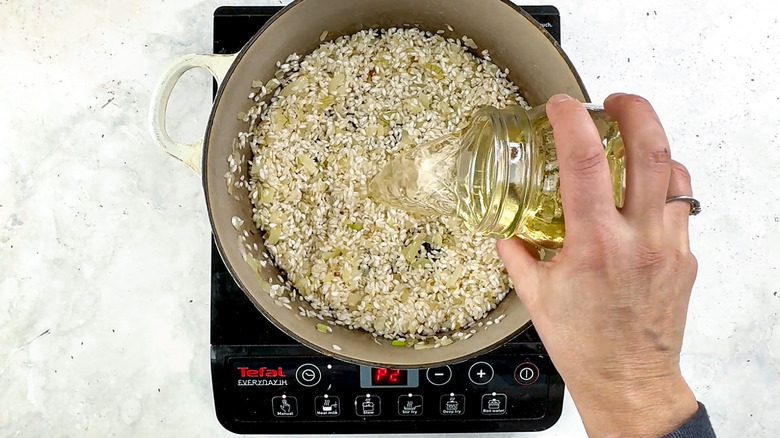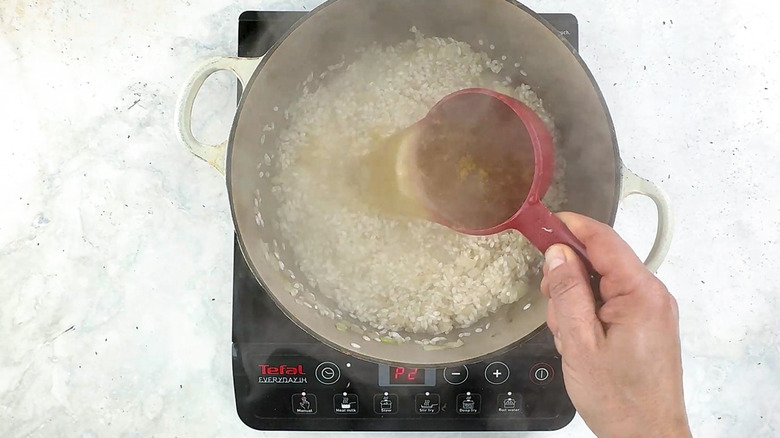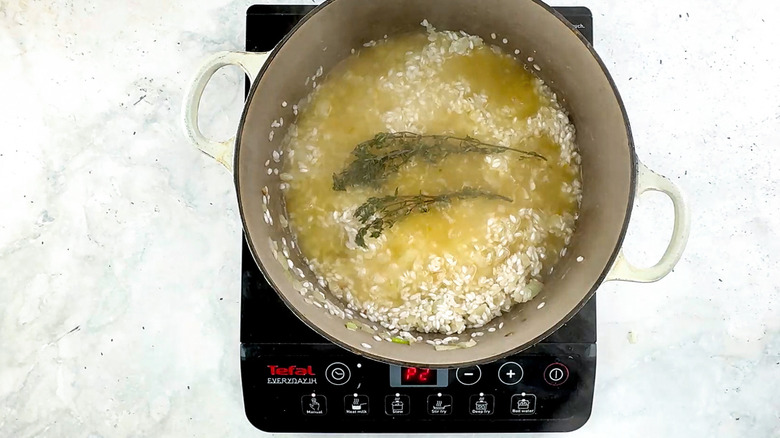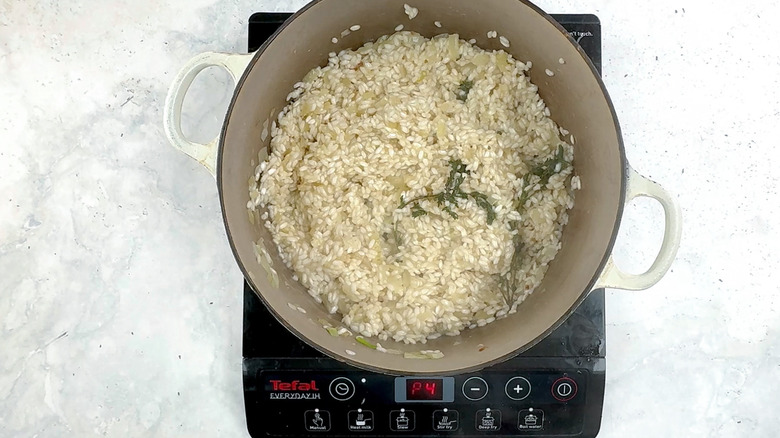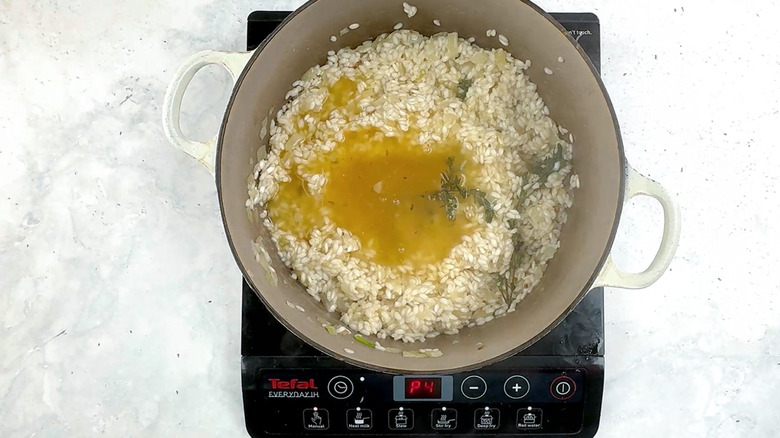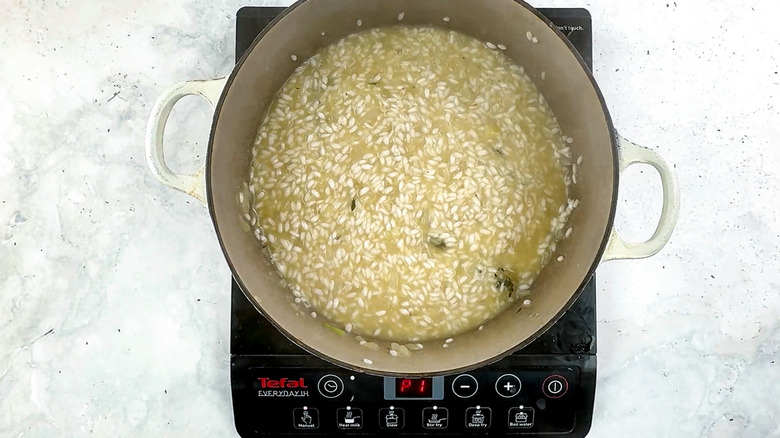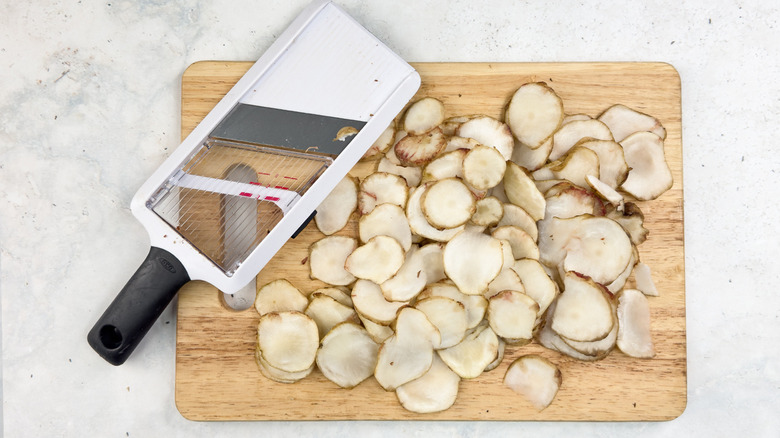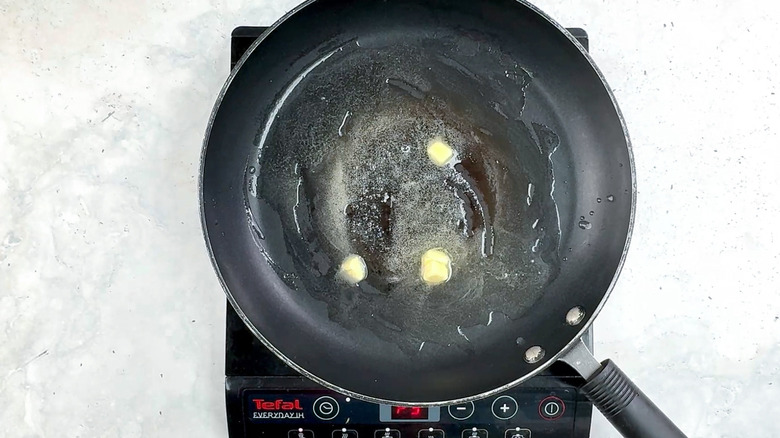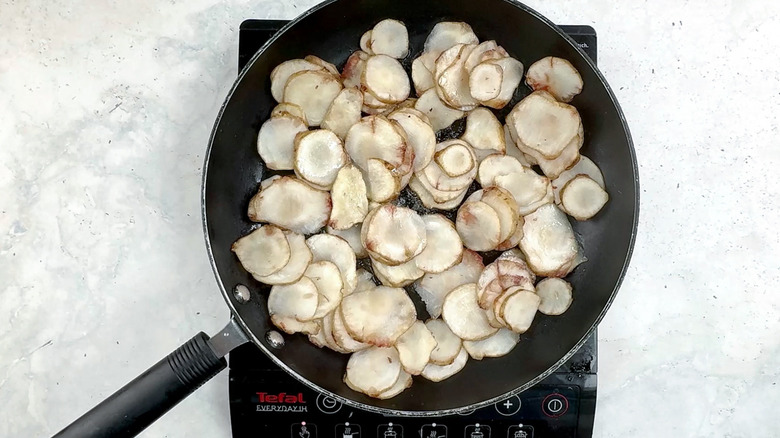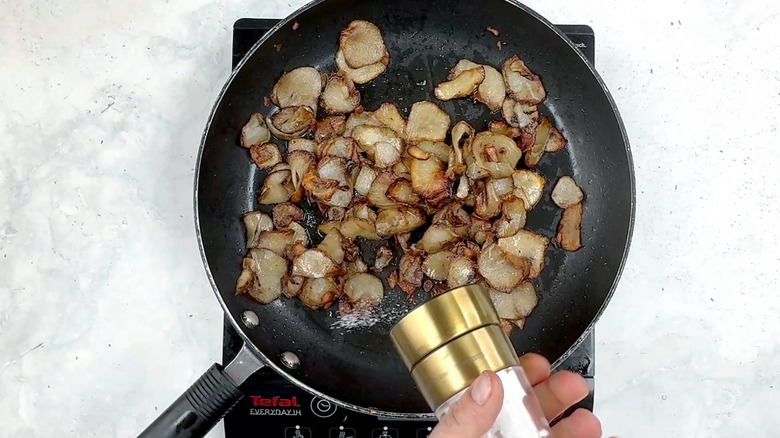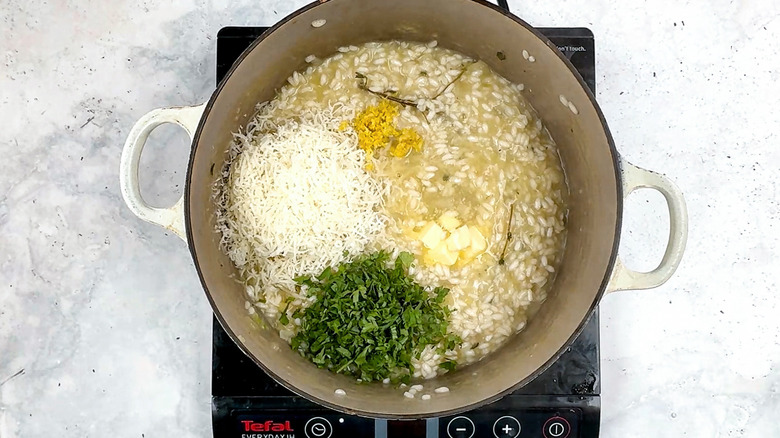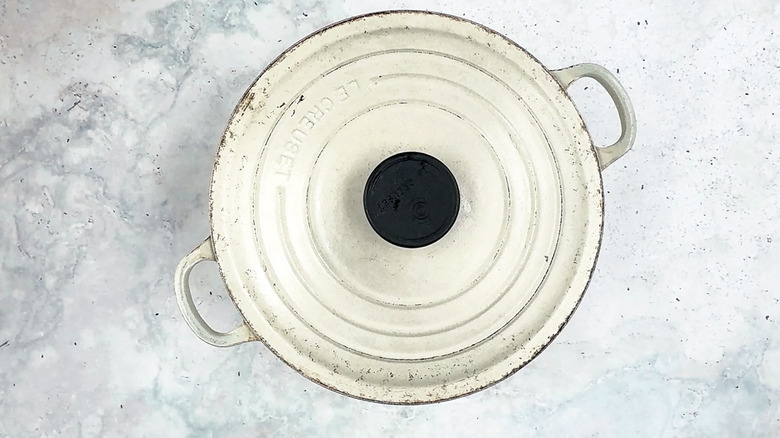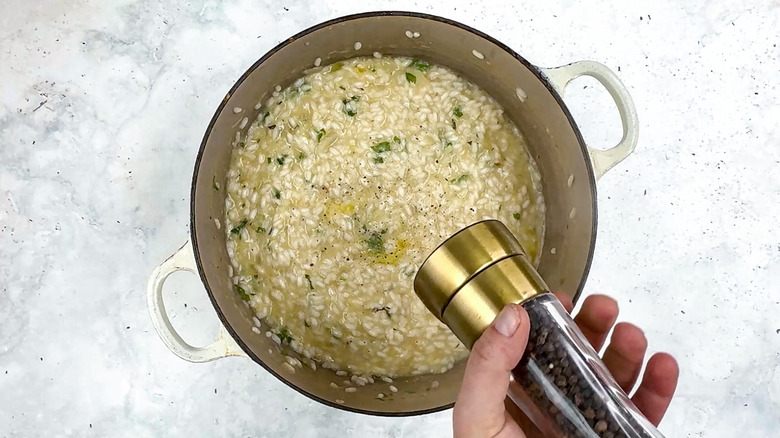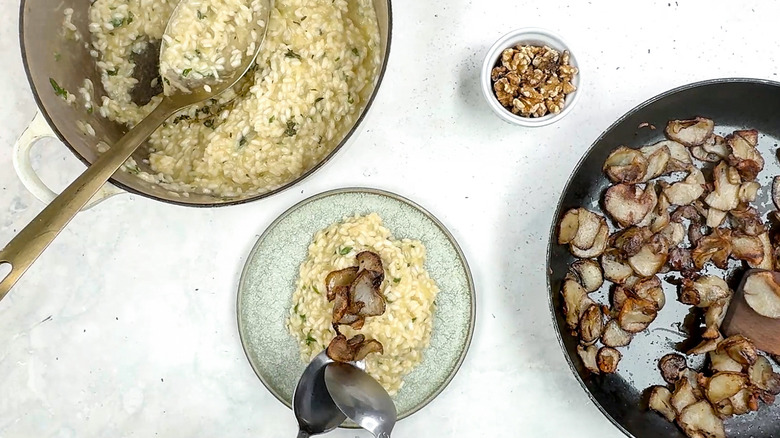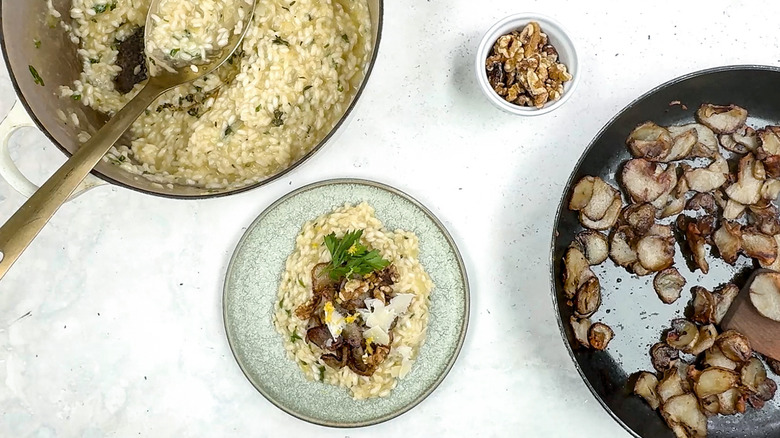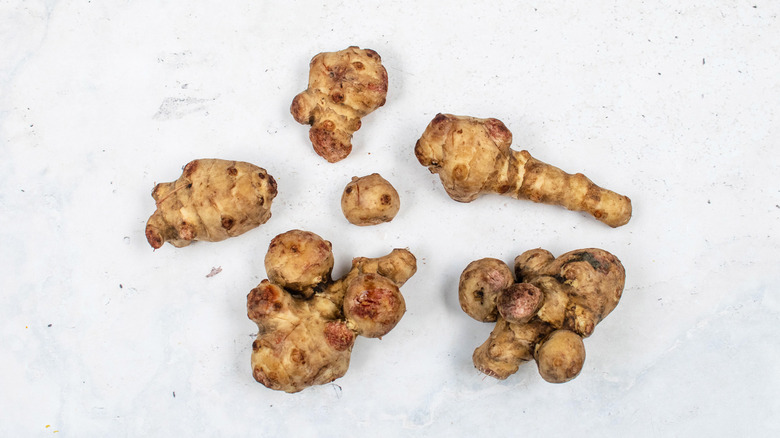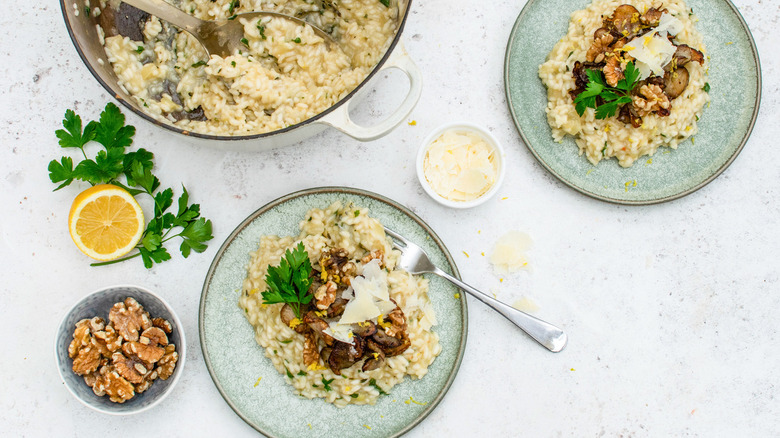Lemon And Sunchoke Risotto Recipe
Is there any better comfort food than a perfectly cooked, creamy risotto? Rich and velvety, it is definitely hard to beat. For a tasty take on this Italian classic, recipe developer Annabelle Randles combines nutty and sweet sunchokes with the bright, citrusy notes of lemon. This dish is best enjoyed with a crunchy green salad on the side and a glass of dry white wine.
Thinly sliced and cooked separately from the rice, the sunchokes are pan-fried until golden and crispy for a perfect contrast to the risotto. The sunchokes are added alongside walnuts on top of the cooked risotto just before serving. Garnishes are optional but Randles likes to add extra Parmesan, parsley, and lemon zest.
This lemon and sunchoke risotto is best served immediately after cooking while it's still creamy and hot. Otherwise as the rice keeps on absorbing liquid it can become mushy or lose its signature al dente, velvety texture.
Gather the ingredients for this lemon and sunchoke risotto
To make this lemon and sunchoke risotto you will need some arborio rice, sunchokes, dry white wine, vegetable stock, Parmesan cheese, onion, garlic, fresh thyme, parsley, lemon, walnuts, olive oil, butter, salt, and pepper. Optional garnishes include extra Parmesan, parsley, and lemon zest.
Step 1: Heat the stock
Heat stock to a simmer in a saucepan over medium heat.
Step 2: Keep the stock warm
Turn heat to low to keep stock warm while cooking the risotto.
Step 3: Heat the olive oil and butter
Heat 1 tablespoon of the olive oil and 1 tablespoon of the butter in a heavy-duty pot or Dutch oven over medium heat.
Step 4: Saute the onion
Saute the onion until translucent, about 3 minutes.
Step 5: Add the garlic
Add the garlic and cook for 30 seconds.
Step 6: Add the rice
Stir in the rice until coated.
Step 7: Add the wine
Add the wine and, stirring occasionally, cook until liquid is fully absorbed.
Step 8: Add the stock
Add 1 cup of vegetable stock to the rice.
Step 9: Add the thyme
Add the thyme sprigs.
Step 10: Cook until the wine is absorbed
Stirring occasionally, cook the rice until the liquid is fully absorbed.
Step 11: Add more stock
Add another cup of vegetable stock, and cook until the liquid is fully absorbed.
Step 12: Add more stock
Repeat adding stock as per Step 11 until the rice is tender but still has a bite, about 20 minutes.
Step 13: Prepare the sunchokes
In the meantime, prepare the sunchokes: Using a sharp knife or mandoline, cut the sunchokes into thin slices.
Step 14: Heat the butter and oil in frying pan
Heat 1 tablespoon of the butter and the remaining 1 tablespoon of olive oil in a frying pan over medium heat.
Step 15: Fry the sunchokes
Fry the sunchokes until golden.
Step 16: Season the sunchokes
Season the sunchokes to taste with salt and pepper.
Step 17: Add the remaining ingredients
When the rice is cooked, stir in the remaining 1 tablespoon of butter, Parmesan cheese, parsley, lemon juice, and lemon zest.
Step 18: Leave the risotto to sit
Remove pot from the heat, place a lid on top, and allow risotto to sit for 2 minutes.
Step 19: Season the risotto
Season the risotto to taste with salt and pepper. Discard thyme.
Step 20: Top the risotto with sunchokes
Scatter the fried sunchokes and walnuts on top each serving of risotto.
Step 21: Serve the risotto
Serve immediately with extra Parmesan, parsley, and lemon zest on top, if using.
What are sunchokes and how do you prepare them?
Slightly sweet with notes of artichoke hearts, nuts, and salsify, sunchokes have a texture similar to potatoes. Crispy and crunchy when raw, these root vegetables become soft and mushy when cooked. Native to North America, they are also known as Jerusalem artichokes and belong to the sunflower family.
Sunchokes are unique vegetables that are notoriously very dirty because of their knobby, irregular shape. The first step when preparing them is to remove any dirt by scrubbing them thoroughly with a vegetable brush under cold water.
Sunchokes have a nutty, sweet flavor and are delicious in a variety of dishes from soups to salads to a pan of roasted vegetables. They can be cooked in various ways, including baking, blanching, boiling, roasting, deep-frying, sauteing, or even eaten raw in salads. They have a very thin edible skin so peeling (which can be fiddly and time consuming) is optional.
Keep in mind that sunchokes tend to turn yellowish brown once cut and exposed to air. If you are not using them straightaway, toss the chopped sunchokes in lemon juice to prevent discoloration.
How do I cook a perfectly creamy risotto?
Achieving the perfect texture for risotto requires selecting the right ingredients as well as patience during the cooking process.
To give risotto its creamy texture, you need to use a short-grain rice with a high starch content such as arborio rice or carnaroli rice. Use wine to enhance the overall flavor of risotto as well as a quality vegetable stock (either homemade or store-bought). The stock should ideally be kept warm during the cooking process and added progressively to the rice.
Risotto is a relatively straightforward dish to cook. However, you need to pay attention while cooking it, stirring constantly. The rice needs to absorb the cooking liquid slowly to release its starches and develop a rich and smooth texture. So it is important to add the stock steadily, waiting for it to be soaked up before adding more. The other step not to skip is, once cooked, to leave the risotto to sit for a couple of minutes undisturbed in the cooking pan with a lid. This is when it becomes extra creamy. And then eat it as soon as possible!
Lemon and Sunchoke Risotto Recipe
All your stirring will be greatly rewarded with a rich, creamy, and lemony risotto. Crispy sunchokes and walnuts atop make for a deliciously memorable contrast.
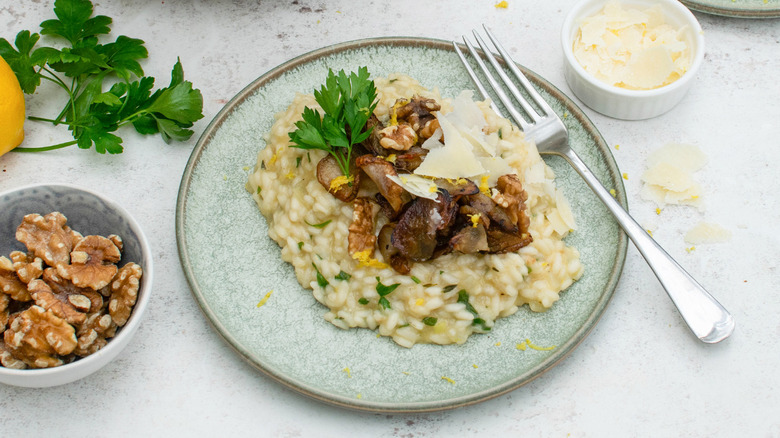
Ingredients
- 5 to 6 cups of vegetable stock
- 2 tablespoons olive oil, divided
- 3 tablespoons butter, divided
- 1 cup onion, diced
- 3 garlic cloves, grated
- 2 cups arborio rice
- 1 cup dry white wine
- 3 sprigs of fresh thyme
- ¾ pounds sunchokes, cleaned and scrubbed
- Salt and pepper, to taste
- 1 cup Parmesan cheese, grated
- 3 tablespoons finely chopped parsley
- Juice and zest of 1⁄2 lemon
- 1/2 cup walnuts
Optional Ingredients
- Extra Parmesan, for garnish
- Extra parsley, for garnish
- Extra lemon zest, for garnish
Directions
- Heat stock to a simmer in a saucepan over medium heat.
- Turn heat to low to keep stock warm while cooking the risotto.
- Heat 1 tablespoon of the olive oil and 1 tablespoon of the butter in a heavy-duty pot or Dutch oven over medium heat.
- Saute the onion until translucent, about 3 minutes.
- Add the garlic and cook for 30 seconds.
- Stir in the rice until coated.
- Add the wine and, stirring occasionally, cook until liquid is fully absorbed.
- Add 1 cup of vegetable stock to the rice.
- Add the thyme sprigs.
- Stirring occasionally, cook the rice until the liquid is fully absorbed.
- Add another cup of vegetable stock, and cook as per step 8 until the liquid is fully absorbed.
- Repeat adding stock as per Step 10 until the rice is tender but still has a bite, about 20 minutes.
- In the meantime, prepare the sunchokes: Using a sharp knife or mandoline, cut the sunchokes into thin slices.
- Heat 1 tablespoon of the butter and the remaining 1 tablespoon of olive oil in a frying pan over medium heat.
- Fry the sunchokes until golden.
- Season the sunchokes to taste with salt and pepper.
- When the rice is cooked, stir in the remaining 1 tablespoon of butter, Parmesan cheese, parsley, lemon juice, and lemon zest.
- Remove pot from the heat, place a lid on top, and allow risotto to sit for 2 minutes.
- Season the risotto to taste with salt and pepper. Discard thyme.
- Scatter the fried sunchokes and walnuts on top each serving of risotto.
- Serve immediately with extra Parmesan, parsley, and lemon zest on top, if using.
Nutrition
| Calories per Serving | 882 |
| Total Fat | 35.3 g |
| Saturated Fat | 13.0 g |
| Trans Fat | 0.0 g |
| Cholesterol | 48.2 mg |
| Total Carbohydrates | 106.8 g |
| Dietary Fiber | 7.2 g |
| Total Sugars | 11.4 g |
| Sodium | 1,594.0 mg |
| Protein | 25.1 g |
